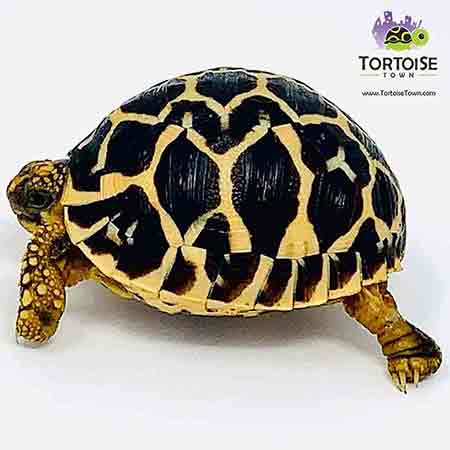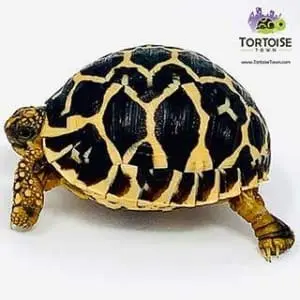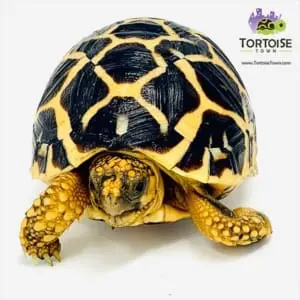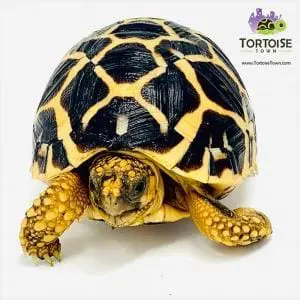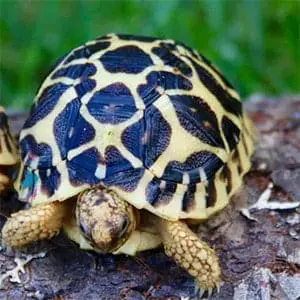Indian Star tortoise heating
During the daytime, a basking lamp heats one end of the enclosure to over (86 to 95°F), leaving the other end at about room temperature. This creates a heat gradient with lots of choices of temperature, allowing the tortoise to warm up when it needs to, and cool down when it needs to. The tortoise chooses the temperature it wants.
The bulb should be mounted so that it hangs above the tortoise, about halfway between the front and back of the enclosure. Alternatively, keep it a similar distance from the end wall. Night time temperatures in nature are higher than a typical home, some nighttime heat is required. The intention is to have a warm part of the enclosure with a temperature of at least 72°F at night.
Indian Star Tortoise for sale – Indian Star tortoise heating
This can be provided by a low power heat mat stuck to the ceiling or wall (not the floor) at the warm end of the enclosure. Ideally, this is controlled with a mat thermostat so that it does not change throughout the year. Heat in nature comes from the sun, and tortoises are not adapted to using heat sources below them – they may burn on a heat mat if it is placed below them. Examples include the Habistat, ProRep or Lucky Reptile 4 watt, 7 watt or 11 watt heat mats. Alternatively, a lower powered red basking lamp (which tortoises can see, but not as well as white light) can be used at night. Be sure to position next to the daytime basking lamp.
There are other ways to heat the enclosure, such as ceramic heaters, but the daytime basking lamp (and nighttime heat mat) is the best approach. Keeping in mind the tortoises are attracted to the light when they want to warm up, and the UVA (not UVB) that it gives off may improve their overall happiness. Note that basking lamps and heat mats, like most heaters, work by radiated heat, not by heating the air.
Thermometers usually measure the air temperature, so will give a false reading. The important temperature is the one that will be reached by an object – the animal or something representing it. This happens when it is placed near the heater for long enough to absorb the radiated heat. (a number of hours). Infrared thermometers allow you to measure the temperature of the substrate, ornaments, and animal, rather than the temperature of the air. Wet substrates will appear to be colder than dry ones. Test dry surfaces when measuring temperatures.
Indian Star tortoise Care Guide
For more information on star tortoise care, please check out some of our free star tortoise information below. Our biologist has provided quite a bit of care related information for all new tortoise owners education.

